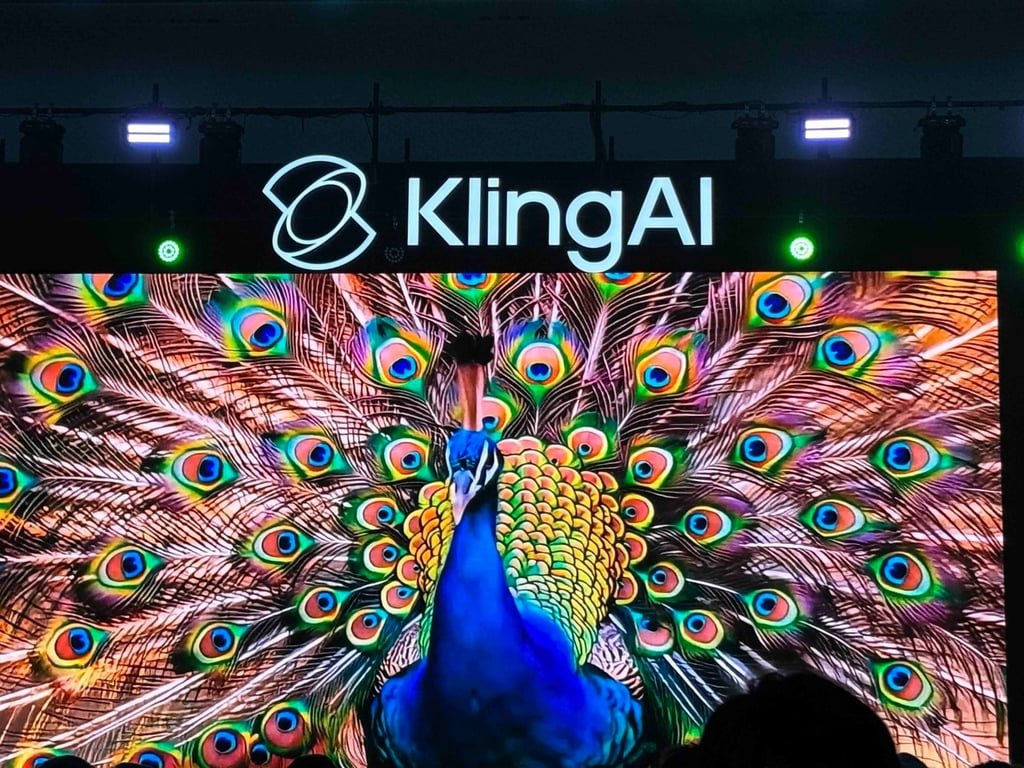Tools & Platforms
Silicon Valley’s graying workforce: Gen Z staff cut in half at tech companies as the average age goes up by 5 years

Gen Z are digital natives raised in the era of YouTube, Tumblr, Instagram, and Facebook; and now, they’re some of the strongest AI users in their personal and professional lives. But Silicon Valley tech companies looking to make waves with AI aren’t holding onto the digitally savvy generation—instead, they’re actively boxing them out.
The percentage of young Gen Z employees between the ages of 21 and 25 has been cut in half at technology companies over the past two years, according to recent data from compensation management software business Pave with workforce data from more than 8,300 companies. These young workers accounted for 15% of the workforce at large public tech firms in January 2023. By August 2025, they only represented 6.8%. The situation isn’t pretty at big private tech companies, either—during that same time period, the proportion of early-career Gen Z employees dwindled from 9.3% to 6.8%.
Meanwhile, the average age of a worker at a tech company has risen dramatically over those two and a half years. Between January 2023 and July 2025, the average age of all employees at large public technology businesses rose from 34.3 years to 39.4 years—more than a five year difference. On the private side, the change was less drastic, with the typical age only increasing from 35.1 to 36.6 years old.
Millennials are currently ruling the tech industry and clinging to their roles as the economy is rocked by uncertainty due to tariffs, inflation increases living expenses, and AI swipes jobs. Meanwhile, entry-level Gen Zers are just hoping to get their careers off the ground.
“If you’re 35 or 40 years old, you’re pretty established in your career, you have skills that you know cannot yet be disrupted by AI,” Matt Schulman, founder and CEO of Pave, tells Fortune. “There’s still a lot of human judgment when you’re operating at the more senior level…If you’re a 22-year-old that used to be an Excel junkie or something, then that can be disrupted. So it’s almost a tale of two cities.”
Schulman points to a few reasons why tech company workforces are getting older and locking Gen Z out of jobs. One is that big companies—like Salesforce, Meta, and Microsoft—are becoming a lot more efficient thanks to the advent of AI. And despite their soaring trillion-dollar profits, they’re cutting employees at the bottom rungs in favor of automation. Entry-level jobs have also dwindled because of AI agents, and stalling promotions across many agencies looking to do more with less. Once technology companies weed out junior roles, occupied by Gen Zers, their workforces are bound to rise in age. And experts tell Fortune that spells a lot of trouble for innovation and long-term business stability.
Why Silicon Valley’s workforce is getting older—and what the long-term impacts are
The rapid disappearance of Gen Z at large technology companies is a dog whistle to what’s really going behind the scenes—AI is automating roles, from entry-level upwards. But what’s worrying about their presence disappearing faster at large public companies is the fact that early career pipelines are being completely disrupted. And they’re often the businesses with enough equity to invest in these Gen Z-targeted talent initiatives in the first place.
“Most public companies have fleshed out training programs that are squarely centered around new grad programs and university recruiting,” the Pave CEO, with early-career experience at Facebook and Microsoft, explains. “A company like Meta, their whole talent thesis was to go after universities, get the smart 21-year-olds, and then train them up. It’s just not as relevant as a paradigm for private companies.”
Jeri Doris, chief people officer at software company Justworks, tells Fortune workforce reductions have created a difficult barrier for Gen Z. Businesses are striving to do more with less, cutting entry-level roles and striving for AI automation to save on headcount costs. Mass firings have wiped whole corporate departments across the U.S., as companies announced more than 806,000 job cuts from January through the end of July this year, according to a report from Challenger, Gray & Christmas. It’s a 75% spike from the approximately 460,000 reductions announced through the first seven months of last year.
“Mass tech layoffs and a reduction in entry-level jobs means it’s harder for Gen Z to find open roles to apply for,” Doris explains. “On the flip side, Gen Z is prioritizing flexible working, job stability and work-life balance—something the tech industry may not be able to offer—so they’re applying to roles in different industries.”
As thousands of Gen Z are shut out making a name in the industry—even just getting a foot in the door—there could be serious long-term impacts. In the near future, many CEOs may espouse the money-saving potential of automating entry-level jobs. But looking 10 or 20 years ahead, when technology companies’ current millennial workers progress towards senior roles, there’s the question of who will take over their mid-level jobs. If Gen Z don’t have the opportunity to learn from the bottom-up, there presents a major issue of stifled innovation and a lack of talent ready to step into those positions.
Pave CEO Schulman uses sales roles as an example: “There’s a very linear, structured path that exists across like almost every tech company. You start doing the junior-level outbound sourcing work, then you become a mid-market account executive, then you become an enterprise seller. Enterprise sellers, in my opinion, will not be disrupted by AI anytime soon.”
“Enterprise sellers are still needed, but you’re removing the roles beneath them on that career hierarchy. How are we going to train the future of enterprise sellers, if they aren’t going through the conventional steps to get there?”
How Gen Z tech industry hopefuls can make the best of the situation
While the situation looks scary for Gen Zers looking to get a job at a tech firm, experts tell Fortune they should leverage the assets they have. Being new to the industry can even work to their advantage.
“[Companies] can hire a 21, 22-year-old that has not been brainwashed by years of corporate America. And instead, can just break the rules and leverage AI to a much greater degree without the hindrance of years of bias,” Schulman says. “I do think there is a new crop of these young ones that are just really leveraging AI maximally.”
To be a highly sought-after worker in this AI-automated era, that means being “manically” focused on all the new models that come out. Gen Z should study how to prompt chatbots extremely effectively, and even create bespoke models for their lines of work. Priya Rathod, workplace trends editor for LinkedIn, also tells Fortune that the young professionals shouldn’t give up on the tech industry. Instead, they should rethink their path within it—upskilling and taking on new career pathways can be a strong point of entry. Lucky for Gen Z, they don’t have to go back to college to get an upper-hand in the talent market.
“Building skills through certifications, gig work, and online communities can open doors,” Rathod recommends. “Roles in UX, AI ethics, cybersecurity, and product operations are promising entry points. Instead of waiting for opportunities, they should create them—through freelance projects, networking, and showcasing work online.”
“Employers are increasingly rethinking traditional degree requirements. For Gen Z, the right certifications or micro credentials can outweigh a lack of years on the resume. This helps them stay competitive even when entry level opportunities shrink.”
Tools & Platforms
Global policymakers, executives urge open collaboration to share opportunities of AI-Xinhua
SHENYANG, Sept. 11 (Xinhua) — The 2025 Global Industrial Internet Conference concluded on Monday in Shenyang, the capital of northeast China’s Liaoning Province, having seen Chinese and international guests issue a call for open cooperation to share in the new opportunities presented by artificial intelligence (AI).
The conference brought together government and business representatives from over 10 countries, including Brazil, the United States, the Republic of Korea, Saudi Arabia and China, spanning sectors such as mobile communication, AI and high-end manufacturing. Attendees held in-depth discussions on how to better advance intelligentization, network connectivity and digitalization in economic development.
Piero Scaruffi, founder of Silicon Valley Artificial Intelligence Research Institute, said that AI technology is not a zero-sum game, but rather a catalyst for mutual benefits and shared success. Today’s advancements in AI have benefited greatly from international cooperation.
Tang Lixin, vice president of Northeastern University in Liaoning and an expert on industrial intelligence, told Xinhua that AI has become a strategic technology leading a new technological revolution and industrial transformation. It is a critical strategic resource driving global technology leaps, industrial optimization and upgrading, and overall productivity advancement, exerting profound impacts on economic and social development. Promoting the healthy, orderly development of AI has become particularly urgent, he noted.
“AI presents a shared opportunity for all humanity, as well as a common challenge we all face,” said Hermano Tercius, secretary of telecommunications at the Ministry of Communications of Brazil, adding that in the current complex and ever-changing international environment, strengthening international cooperation in the field of new technologies is crucial.
He said that as the world’s third-largest user of AI, Brazil still lags behind in data center construction. This necessitates collaboration with countries that have advantages in digital infrastructure to achieve complementary benefits and mutual success.
The further advancement of global AI technology hinges on the existence of an open, inclusive environment for innovative collaboration. During the conference, many participants highlighted challenges in areas such as governance frameworks and technical standards that current global AI development faces.
“AI has triggered significant transformations in the technological landscape. Without better compliance-driven rulemaking, it is difficult to predict its future trajectory. Global cooperation is essential to address these challenges,” said Alexandre V. Chidiac, managing partner of Iskandar Group, which is a company engaged in international shipping and trade.
“We advocate for inclusive policies and environments in the field of AI among all nations,” Tercius said. “Only through such efforts can we ensure that no country is left behind in this technological revolution, and build a robust bridge towards shared prosperity and an interconnected future for the world.”
Ben Sassi, general manager of the Warsaw Chamber of Commerce in Poland, stated that there is an urgent global need to strengthen dialogue, enhance mutual trust, and build widespread consensus in areas such as rule-making, technical standards and ethics to promote the healthy development of AI in a united manner.
Over the years, China has made positive explorations and contributed constructive ideas and solutions to the global governance of AI. The country launched the Global AI Governance Initiative in 2023. And last year, the 78th UN General Assembly reached a historic consensus by adopting a resolution on enhancing international cooperation for AI capacity building, which was spearheaded by China.
Participating guests also expressed their willingness to collaborate with China in the field of AI in the future. Pakistan Global Business Alliance Chairman Muhammad Asif Noor Farooqi, for example, said that he hopes China and Pakistan will enhance cooperation within the digital economy to strengthen Pakistan’s intelligent infrastructure. ■
Tools & Platforms
The Latest Tech News – SimCorp, Axyon AI

The latest technology news in the wealth management sector from around the world.
SimCorp, Axyon AI
SimCorp, the global
financial technology provider and subsidiary of Deutsche Börse
Group, is partnering with Axyon AI, a fintech firm specialising
in predictive, AI-driven solutions for asset managers, hedge
funds and institutional investors.
Axyon AI’s predictive analytics will integrate into the SimCorp
One investment management platform later this year.
Equity managers and analysts will gain access to predictive
alerts, helping them anticipate market shifts, identify emerging
opportunities, and assess potential risks, SimCorp said in a
statement.
“By integrating Axyon AI’s solutions into the SimCorp One
platform, portfolio managers benefit from seamless access to
asset forecasts, rankings and signals directly within their
existing workflows,” Marc Schröter, chief product and technology
officer at SimCorp, said.
As part of the deal, Axyon AI wil join SimCorp’s open
platform ecosystem, which will give SimCorp One users access
to third-party tools across the investment management value
chain.
SimCorp referred to industry research showing that there is
rising demand for AI in asset management. The 2025 Global
InvestOps Report found that 75 per cent of buy-side executives
recognise AI’s potential benefits but require more guidance on
how to embed it effectively.
Tools & Platforms
Alibaba leads US$60 million investment in AI video generation start-up AIsphere

The Beijing-based start-up behind the popular artificial intelligence video generator PixVerse has raised US$60 million in a funding round led by Alibaba Group Holding, the largest single amount raised by a domestic AI video generation firm, according to an announcement on Wednesday.
Other participants in the funding round included Singapore-headquartered venture capital firm Antler and the Beijing Artificial Intelligence Industry Investment Fund. A valuation was not disclosed.
The deal comes as China’s Big Tech firms are looking at niche AI start-ups to complement their own offerings and final products.
Founded in April 2023 by former Microsoft and ByteDance executive Wang Changhu, AIsphere’s video creation product allows users to easily generate videos from text prompts, images and other video clips.
The new funds would support R&D and continued global expansion, the start-up said.
PixVerse now had over 100 million users globally, the announcement said, more than double the number at the start of the year. Its “Venom effect” video template went viral on TikTok late last year.
-

 Business2 weeks ago
Business2 weeks agoThe Guardian view on Trump and the Fed: independence is no substitute for accountability | Editorial
-
Tools & Platforms1 month ago
Building Trust in Military AI Starts with Opening the Black Box – War on the Rocks
-

 Ethics & Policy2 months ago
Ethics & Policy2 months agoSDAIA Supports Saudi Arabia’s Leadership in Shaping Global AI Ethics, Policy, and Research – وكالة الأنباء السعودية
-

 Events & Conferences4 months ago
Events & Conferences4 months agoJourney to 1000 models: Scaling Instagram’s recommendation system
-

 Jobs & Careers2 months ago
Jobs & Careers2 months agoMumbai-based Perplexity Alternative Has 60k+ Users Without Funding
-

 Podcasts & Talks2 months ago
Podcasts & Talks2 months agoHappy 4th of July! 🎆 Made with Veo 3 in Gemini
-

 Education2 months ago
Education2 months agoVEX Robotics launches AI-powered classroom robotics system
-

 Education2 months ago
Education2 months agoMacron says UK and France have duty to tackle illegal migration ‘with humanity, solidarity and firmness’ – UK politics live | Politics
-

 Funding & Business2 months ago
Funding & Business2 months agoKayak and Expedia race to build AI travel agents that turn social posts into itineraries
-

 Podcasts & Talks2 months ago
Podcasts & Talks2 months agoOpenAI 🤝 @teamganassi





















